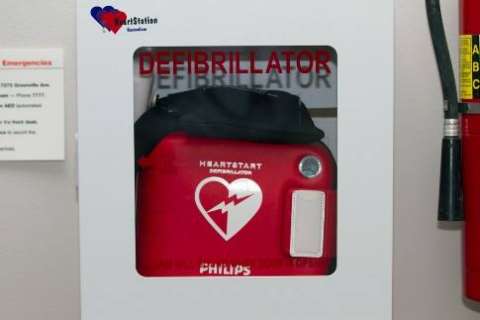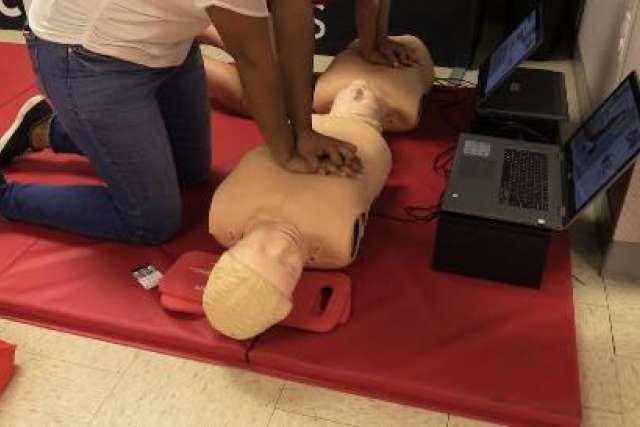When Buffalo Bills safety Damar Hamlin went into cardiac arrest and collapsed following a tackle during a game against the Cincinnati Bengals Monday night, the nation’s attention was drawn to the quick response of the trainers, physicians and EMTs who rushed to his side to resuscitate him and save Hamlin’s life.
For Olujimi Ajijola, MD, PhD, clinical cardiac electrophysiologist at UCLA Health, the dramatic turn on the field highlights the need for more people to learn CPR and how to respond in the face of a life-threatening cardiac event.
Cardiac arrest and heart attack are not the same thing
The event that many physicians suspect precipitated Hamlin’s cardiac arrest — commotio cordis, which occurs from a forceful impact to the chest at a precise moment when the heart is cycling between beats and disrupts the heart rhythm — is rare, but cardiac arrest and heart attacks can occur with disturbing regularity. Heart disease is the leading cause of death in the United States, with one person dying every 34 seconds from cardiovascular disease.
Though people often use the terms cardiac arrest and heart attack interchangeably, they are not the same.
Doctors say Hamlin’s injury involved cardiac arrest, which is caused by an electrical instability in the heart. In such a case, “the heart is electrically unstable and has an electrical short circuit that causes the rhythm to go from being organized to chaotic,” Dr. Ajijola said.
A heart attack, on the other hand, is often due to a blockage in an artery that restricts the flow of blood to the heart muscle, causing damage or muscle death.
Cardiac arrest can take place after a heart attack, and a heart attack can increase the risk for cardiac arrest.

Every second counts
Hamlin benefited from the presence of trained medical personnel who knew how to respond in such an emergency. But that is not always the case.
Dr. Ajijola advocates for more people to become trained in CPR (Cardiopulmonary Resuscitation) and the use of an automated external defibrillator (AED). Because many cardiac arrests occur in a public place, a citizen’s quick response and knowledge of CPR can be the difference between life and death.
“Timing is of the utmost importance if someone has a cardiac arrest because every second the heart isn’t restored to a normal rhythm, it reduces the likelihood of survival,” Dr. Ajijola stated.
A cardiac arrest can also affect organs such as the brain and kidneys. The sooner circulation is restored, the better chance the person has of recovering fully. “The longer it takes, the less likely it is the person will survive, and there will be other health implications,” Dr. Ajijola said.
“If you are a bystander and see someone suddenly fall down, the first thing to do is to call for help,” he said. “Then you want to check for a pulse. If there is no pulse, call for help and begin administering CPR immediately.”
If there is an AED nearby — the devices are required by law in public places such as stadiums and airports — “put the pads on the patient and follow instructions to begin using the device,” Dr. Ajijola said. The public defibrillators provide verbal instructions to users.
Learn more about becoming CPR certified.
Related article
An alumnus meets the UCLA recreation center workers who saved his life with CPR and a defibrillator.




